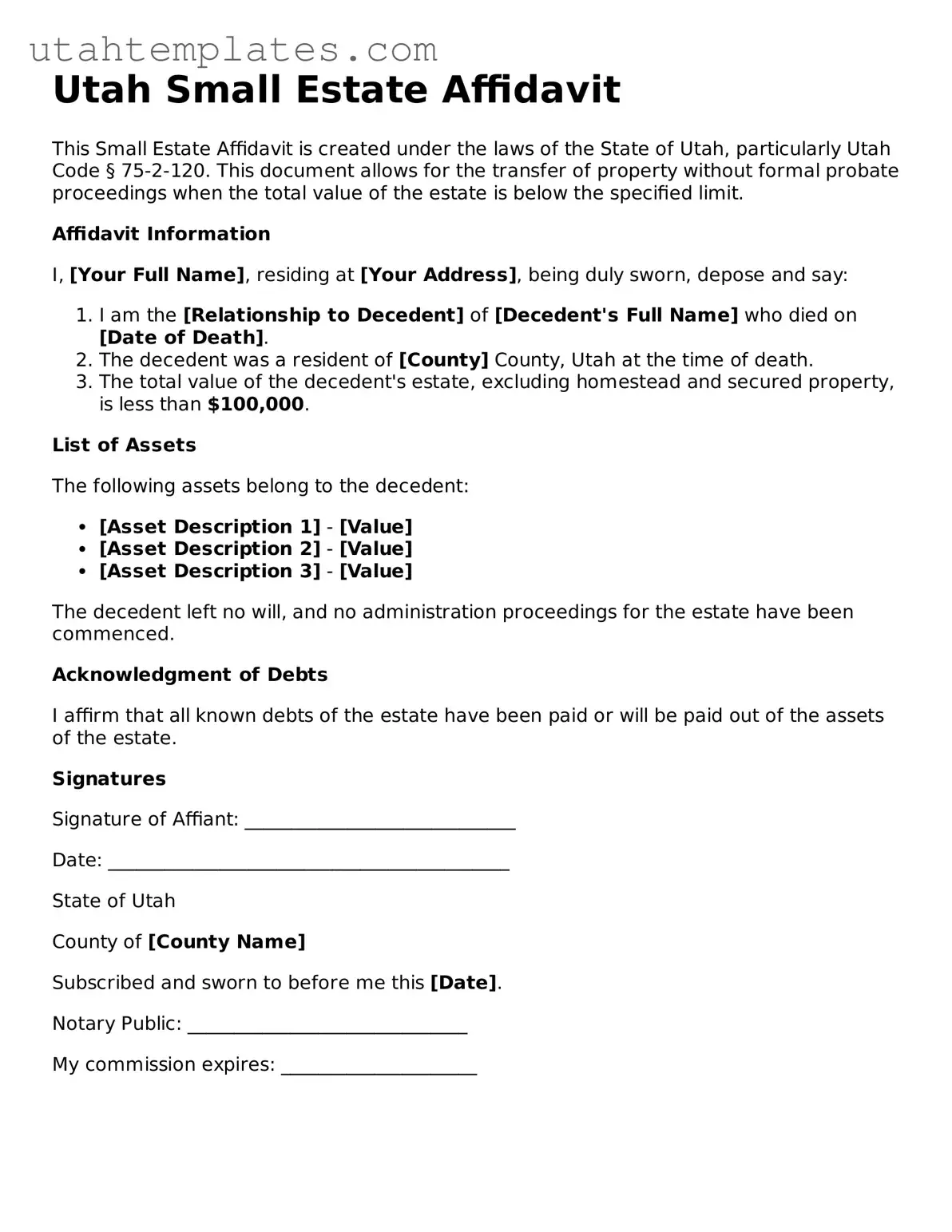Utah Small Estate Affidavit
This Small Estate Affidavit is created under the laws of the State of Utah, particularly Utah Code § 75-2-120. This document allows for the transfer of property without formal probate proceedings when the total value of the estate is below the specified limit.
Affidavit Information
I, [Your Full Name], residing at [Your Address], being duly sworn, depose and say:
- I am the [Relationship to Decedent] of [Decedent's Full Name] who died on [Date of Death].
- The decedent was a resident of [County] County, Utah at the time of death.
- The total value of the decedent's estate, excluding homestead and secured property, is less than $100,000.
List of Assets
The following assets belong to the decedent:
- [Asset Description 1] - [Value]
- [Asset Description 2] - [Value]
- [Asset Description 3] - [Value]
The decedent left no will, and no administration proceedings for the estate have been commenced.
Acknowledgment of Debts
I affirm that all known debts of the estate have been paid or will be paid out of the assets of the estate.
Signatures
Signature of Affiant: _____________________________
Date: ___________________________________________
State of Utah
County of [County Name]
Subscribed and sworn to before me this [Date].
Notary Public: ______________________________
My commission expires: _____________________
